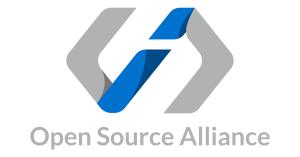
Open Weight Definition Aims to Prevent Open Source AI “Open Washing” at AI Action Summit
The Open Weight Definition, introduced at the AI Action Summit, bridges the gap between closed and Open Source AI for vendors who don't include training data.
PARIS, FRANCE, February 11, 2025 /EINPresswire.com/ -- Today, at the AI Action Summit, the Open Source Alliance (OSA), an official AI Convergence challenge on the theme of Global AI Governance, unveiled the Open Weight Definition (OWD). This new framework is designed to bridge the gap between closed and Open Source AI by providing clear guidelines for AI models that do not include all dependencies required for reproducability, such as training data. The definition aims to prevent misleading claims of openness—often referred to as “open washing”—by ensuring that AI models that do not comply with the Open Source Definition (OSD) are accurately labeled.The Open Weight Definition is a complement, not a competitor, to the Open Source Definition (OSD). It provides an alternative designation for AI models that allow free use and distribution but lack the transparency and modifiability required to qualify as Open Source. By distinguishing Open Weight models from Open Source AI, the new definition protects the integrity of the Open Source movement while promoting accessibility and open innovation in the AI ecosystem.
Addressing the Challenge of “Open Washing” in AI
In recent years, AI vendors have increasingly labeled their models as “Open Source” despite withholding essential components—most notably, the training data required for reproducibility. This practice, known as “open washing”, misleads users, developers, researchers, and policymakers by suggesting a level of openness and transparency that these models do not actually provide. The Open Weight Definition establishes a clear, responsible alternative for such models, ensuring that the industry and the public can distinguish between AI models that are truly Open Source and those that are merely downloadable or modifiable in limited ways.
“Open Source AI requires more than just downloadable model weights—it requires the ability to understand, modify, and reproduce the system,” said Sam Johnston, Convenor of the Open Source Alliance. “The Open Weight Definition provides an additional option for AI vendors who wish to share their models but are not yet willing or able to provide the training data. This ensures clarity and prevents the dilution of Open Source principles.”
Why the Open Weight Definition Matters
The rapid adoption of AI has led to a growing divide between proprietary, closed AI models controlled by a handful of corporations and the open innovation movement that has defined software development for decades. While Open Source has thrived on the principles of freedom to use, study, modify, and share software, AI models introduce new challenges that the Open Source Definition—originally written in 1998 for software—does not fully address.
Unlike traditional software, AI systems are trained on vast datasets, often proprietary or unlicensed, making it difficult or impossible for others to reproduce the same results. Many vendors release pre-trained models under permissive licenses, allowing users to run them freely but without access to the original training data or methodology.
“The Open Weight Definition brings much-needed transparency to the AI ecosystem,” said Johnston. “It provides clarity for users, developers, researchers, and regulators by distinguishing between truly Open Source AI models and those that are merely available for use.”
The Open Weight Definition is particularly relevant in government, enterprise, and academic settings, where organisations need to assess the level of openness in the AI models they adopt. By clearly labeling models as Open Weight, vendors can set realistic expectations while fostering innovation and collaboration. Like the Open Source Definition, it establishes a baseline for Open Weight models, allowing vendors to go beyond its requirements if they choose.
Key Principles of the Open Weight Definition
The Open Weight Definition (OWD) recognises AI models that are freely available for others to use and share, and that:
• Allow anyone to download, use, and distribute the model without restrictions.
• Do not require approval or licensing fees for deployment, including in commercial or research settings.
• May allow for limited study and modification, for example by observing outputs for given inputs, or via fine-tuning respectively.
• May or may not include training data, falling short of the Open Source Definition but still being widely accessible.
• Do not guarantee all four freedoms of Open Source—to use, study, modify, and share—but still encourage widespread adoption and collaboration.
This approach preserves the integrity of Open Source AI while creating a practical middle ground for vendors who are unable or unwilling to release training data but still want to contribute to open innovation.
Open Source vs. Open Weight: What’s the Difference?
The Open Source Definition (OSD) requires that software (including AI models) must be freely available for others to use, study, modify, and share. This means that:
• The source code (or equivalent, such as training data) must be accessible.
• Users must be able to study, modify and redistribute the system without restrictions.
• There should be no limitations on use, including in commercial or research settings.
Open Weight, by contrast, provides a designation for AI models that meet some—but not all—of these criteria. Specifically, Open Weight models allow free use and distribution but may lack the training data and other dependencies necessary for full reproducibility.
“Open Weight models can still play a valuable role in AI innovation,” said Johnston. “But calling them Open Source when they don’t meet the established definition risks undermining the credibility of Open Source itself. The Open Weight Definition ensures AI developers and users can make informed decisions.”
Sam Johnston
Open Source Alliance
+1 888-707-6736
email us here
Visit us on social media:
Facebook
X
LinkedIn
Instagram
Distribution channels: Business & Economy, Conferences & Trade Fairs, Law, Technology, World & Regional
Legal Disclaimer:
EIN Presswire provides this news content "as is" without warranty of any kind. We do not accept any responsibility or liability for the accuracy, content, images, videos, licenses, completeness, legality, or reliability of the information contained in this article. If you have any complaints or copyright issues related to this article, kindly contact the author above.
Submit your press release


